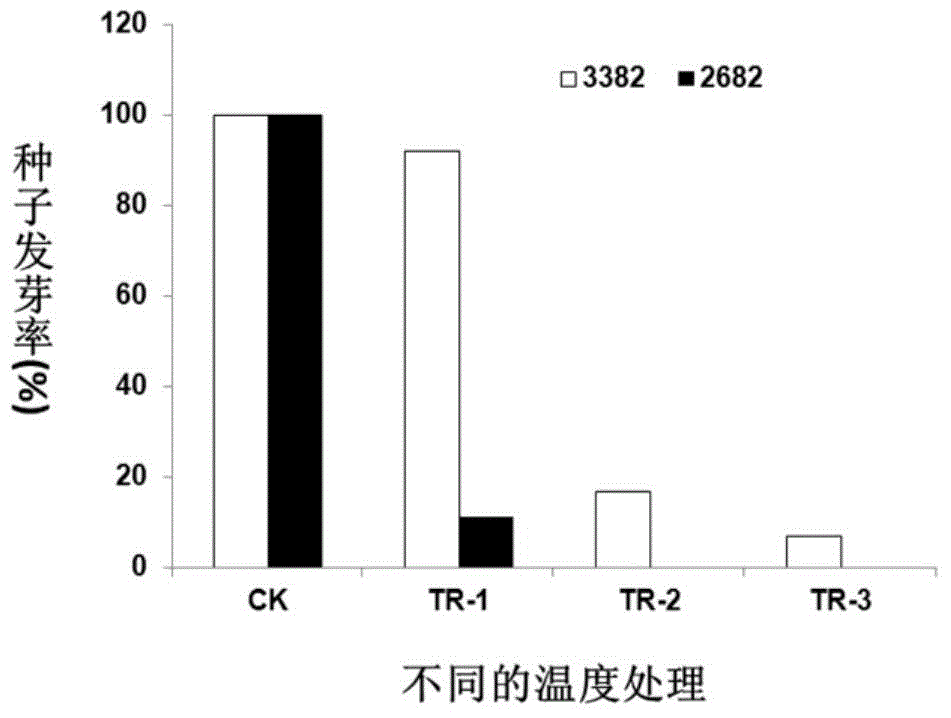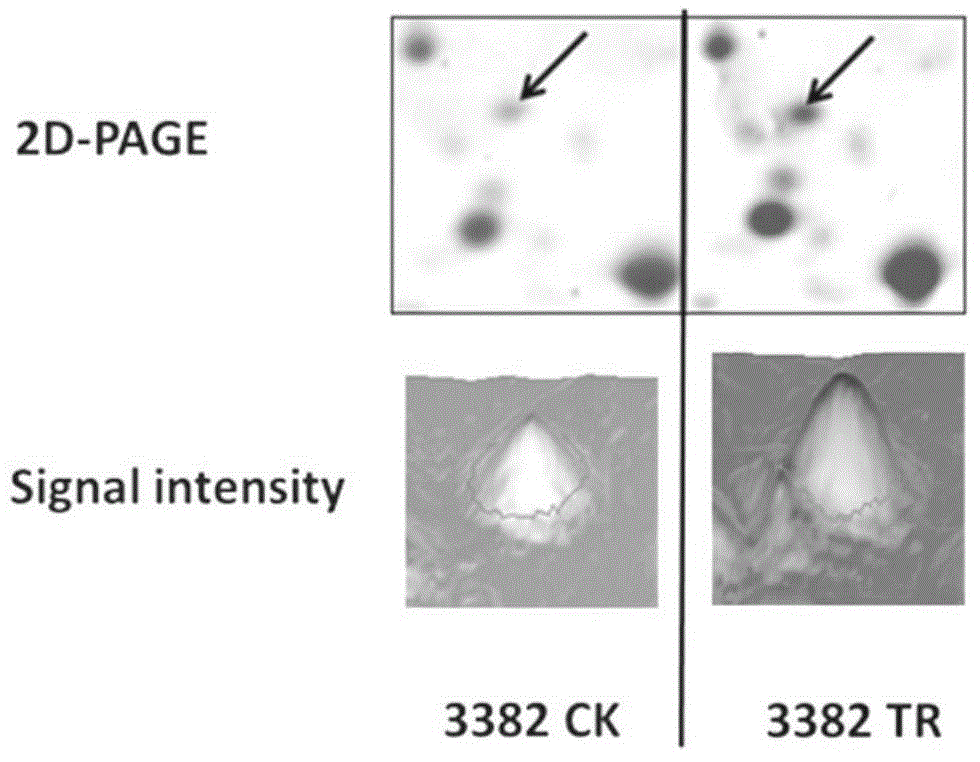High-temperature-resistant cabbage type rape glyoxalase gene and protein as well as applications thereof
A kind of Brassica napus, glyoxalase technology, applied in the field of mutation and genetic engineering, to achieve the effect of expanding heat resistance
- Summary
- Abstract
- Description
- Claims
- Application Information
AI Technical Summary
Problems solved by technology
Method used
Image
Examples
Embodiment 1
[0058] 1. Embodiment 1: Screening of heat-resistant Brassica napus
[0059] First, we screened mature seeds of Brassica napus through different high-temperature treatments to obtain germplasm resources of Brassica napus with different heat resistance, such as figure 1 It was shown that there was a significant difference in the germination rate of the seeds of heat-tolerant Brassica napus 3382 and heat-sensitive Brassica napus 2682 after high temperature treatment at 65°C.
[0060] In order to ensure that the seeds have a germination rate of more than half after treatment, the mature seeds of Brassica napus heat-resistant germplasm resource 3382 were treated as follows:
[0061] Control: 37°C (2h) → standing for 2h (3382CK), the germination rate is 100%;
[0062] Treatment: 37°C (2h) → standing for 2h → 65°C (2h) (3382TR), the germination rate is over 80%;
[0063] Subsequent analysis of protein extraction and two-dimensional electrophoresis is expected to find related prote...
Embodiment 2
[0064] 2. Example 2: Extraction, two-dimensional electrophoresis and mass spectrometry analysis of seed protein
[0065] 1) Extraction of seed protein
[0066] The seeds of 3382 seeds before and after high temperature treatment were extracted by TCA-acetone method for two-dimensional electrophoresis analysis (Ganlu, Li Dianrong, Zang Xin, etc., 2010, the establishment of a protein two-dimensional electrophoresis system in Brassica napus, Acta Crops, 36 (4) :612-619), the specific steps are as follows:
[0067] ① Liquid nitrogen sample 1g;
[0068] ②In 10ml 10%TCA-0.07%DTT(g / v)-acetone solvent, vortex, vibrate vigorously for 15s, place at -20°C for 1h, shake once every 15min during the period;
[0069] ③ Centrifuge at 15000×g (number of rotations) for 30 minutes at 4°C, and remove the supernatant;
[0070] ④Add 15mL 0.07% DTT(g / v)-acetone, precipitate at -20°C for 1 hour, shake twice every 1 hour;
[0071] ⑤ Centrifuge at 15000×g for 30min at 4°C, remove the supernatant, th...
Embodiment 3
[0079] 3. Example 3: Cloning of the BnGLYI coding region
[0080] The RNA of the seeds before and after 3382 heat treatment was extracted by the method of LiCl, and the reverse transcription kit FSK100 of Toyobo was used to reverse-transcribe the cDNA. According to the sequence (Y13239) of the Brassica napus GLYI gene, primers were designed to amplify the full length of the gene (Table 1 ).
[0081] Table 1 is used to amplify the primers of BnGLYI
[0082]
[0083]
[0084]Note: Veena, Reddy VS, Sopory SK, 1999, Glyoxalase I from Brassica juncea: molecular cloning, regulation and its over-expression confer tolerance in transgenic tobacco under stress. Plant J 17: 385–395.
[0085] Using the inverted cDNA as a template, use KOD-PLUS DNA polymerase (product of TOYOBO, Japan, purchased from Beijing Dingguo Biotechnology Co., Ltd.), and perform PCR amplification with the following system:
[0086]
[0087] Make up to 50 μL with ultra-pure water, mix and centrifuge, add ...
PUM
| Property | Measurement | Unit |
|---|---|---|
| molecular weight | aaaaa | aaaaa |
| molecular weight | aaaaa | aaaaa |
Abstract
Description
Claims
Application Information
 Login to View More
Login to View More - R&D
- Intellectual Property
- Life Sciences
- Materials
- Tech Scout
- Unparalleled Data Quality
- Higher Quality Content
- 60% Fewer Hallucinations
Browse by: Latest US Patents, China's latest patents, Technical Efficacy Thesaurus, Application Domain, Technology Topic, Popular Technical Reports.
© 2025 PatSnap. All rights reserved.Legal|Privacy policy|Modern Slavery Act Transparency Statement|Sitemap|About US| Contact US: help@patsnap.com



